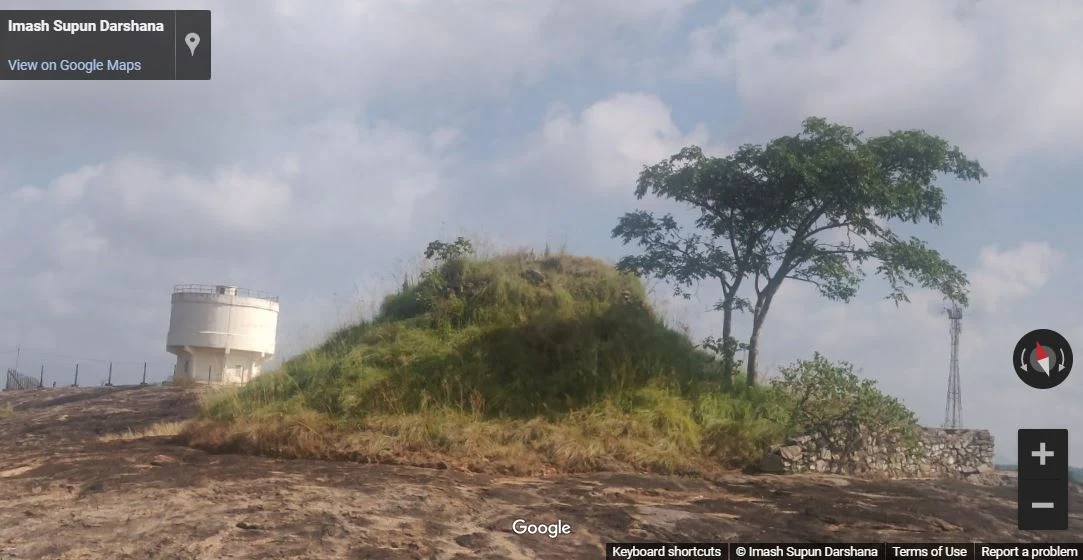
Habarana Wewa (Sinhala: හබරණ වැව, සෙල්ලිපිය සහ පුරාවිද්යා නටඹුන්) is a reservoir situated near Habarana town in Anuradhapura District, Sri Lanka.
History
This tank is probably the ancient Aggivaddhamanaka tank built by King Vasabha [(67-111 A.D.) Paranavitana, 2001]. In the Mahavamsa-tika, the name of this tank is given as Abhi-vaddhamana and in Sinhalese historical writings, it occurs as Ak-vadunna, the equivalent of Agi-vadamana and Abi-vadunna (Paranavitana, 2001). The Later Brahmi Inscription engraved on the rock located at the east margin of the reservoir contains the details of a tank named Agivadamana (Paranavitana, 2001).
The reservoir
The bund of the reservoir is about 3,940 ft long and the water is extending in an area of about 330 acres at its full supply level (Arumugam, 1969). It has one spill and one sluice (Arumugam, 1969).
Archaeological ruins
The ruins of a dilapidated Stupa and a rock inscription written in later-Brahmi scripts have been discovered on the large stretch of granite rock located at the east margin of the Habarana Wewa reservoir. Of them, the Stupa mound has been designated as an archaeological protected monument by the government through a gazette notification published on 23 January 2009.
Habarana Rock Inscription
The inscription occupies an area of irregular dimensions. It reveals the quantity of paddy assessed as the grain tax of the tank named Agivadamana (Aggivaddhamana) which was the property of Agaya, son of Minister Vasaya (Paranavitana, 2001). A king styled Mahaparumaka-maharaja gave the Bojiyapathi share of the assessed tax to Abalaya and a military leader, on condition, gave money for the paddy (Paranavitana, 2001). This income in cash together with a levy on the water revenue referred to as Kula-amana was granted, after having remitted taxes on the Bojiyapathi, for providing oil and offerings at Cetiyaghara, which he had repaired at Ambasthala on Cetiyagiri, for the supervision of carpets in the shrine and for providing meals to the monks who maintained the shrine (Paranavitana, 2001).
According to S. Paranavitana, the king named Maparumaka-maharaji of this inscription can be identified with Kanittha Tissa [(164-192 A.D.) Paranavitana, 2001].

.
See also
References
1) Arumugam, S., 1969. Water resources of Ceylon: its utilisation and development. Water Resources Board. p.270.
2) Paranavitana, S., 2001 (Edited by Dias, M.). Inscriptions of Ceylon: Vol. II. Part II. Archaeological Survey Department, Sri Lanka. pp.157-161.
3) The Gazette of the Democratic Socialist Republic of Sri Lanka. No: 1586. 23 January 2009. p.110.
Location Map
This page was last updated on 1 August 2022

